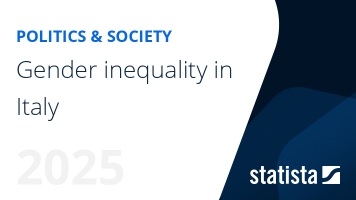Gender based violence in Europe - Statistics & Facts
From the Istanbul Convention to the Gender Equality Plan 2022-2025
Since the late 1990s, the fight against gender-based violence worldwide has become a central focus of the United Nations' global strategy, especially following the 1993 Declaration on the Elimination of Violence Against Women. However, it wasn’t until 2014 that Europe took more decisive steps to address and prevent GBV. The Istanbul Convention, which came into force on August 1, 2014, marked a major milestone in the Council of Europe’s efforts to eradicate this form of discrimination across the continent, becoming the most comprehensive international legal instrument by establishing binding obligations to combat violence against women. Signed by 46 countries in Europe, this landmark framework criminalizes and typifies four forms of gender-based violence—physical, sexual, psychological, and economic— and recognizes them as a violation of human rights. However, only 22 countries have ratified the treaty in the EU, with Czechia, Hungary, Latvia, Lithuania and Slovakia being the exceptions. In addition to the Istanbul Convention, the European Union has also taken significant steps to combat the issue among its member states. Key initiatives include the Gender Equality Strategy 2022-2025 and the first-ever EU-wide Directive that criminalizes violence against women, including female genital mutilation, forced marriage, non-consensual sharing of intimate images, cyberstalking, and cyber harassment. However, this legislation has sparked controversy, especially due to the lack of a standardized definition of rape. As a result, member states have retained their own domestic standard, making it difficult to compare or assess these crimes consistently across the EU.
In addition to the Istanbul Convention, the European Union has also taken significant steps to combat the issue among its member states. Key initiatives include the Gender Equality Strategy 2022-2025 and the first-ever EU-wide Directive that criminalizes violence against women, including female genital mutilation, forced marriage, non-consensual sharing of intimate images, cyberstalking, and cyber harassment. However, this legislation has sparked controversy, especially due to the lack of a standardized definition of rape. As a result, member states have retained their own domestic standard, making it difficult to compare or assess these crimes consistently across the EU. Femicides and Intimate Partner Violence: a common issue in Europe
According to global metrics such as the Global Gender Gap Index and the Gender Equality Index, Eastern European countries exhibit the highest levels of gender inequality in Europe. Violence against women is a stark example of this, with nations such as Russia, Latvia, and Belarus reporting the highest female homicide rates in the continent.At the same time and regardless of being recognized for their success in providing more equalitarian welfare policies to women, the Nordic countries registered the highest sexual violence rates among the EU. This phenomenon, known as the "Nordic Paradox", highlights a contradiction: countries with high levels of gender equality in the public sphere also register high levels of violence against women inside the household, transforming this issue in the most important challenge faced by women in these countries. One of the main explanations behind this phenomenon is that victims may be more willing to report incidents due to a higher trust in the police and judicial system compared to the rest.
Meanwhile, countries in Western Europe, such as Germany or France, have seen a rise in gender-based violence in recent years. In Germany, for example, the number of sexual assault cases exceeded 12,000, the highest number in recent times. Simultaneously, mediterranean countries continue to report increasing levels of femicides—gender-related killings of women or girls—, with Italy recording the highest number of such crimes in 2022. Spain, also recorded an increase in the number of victims of gender violence assaults since 2016, with 58 cases in 2023.















































